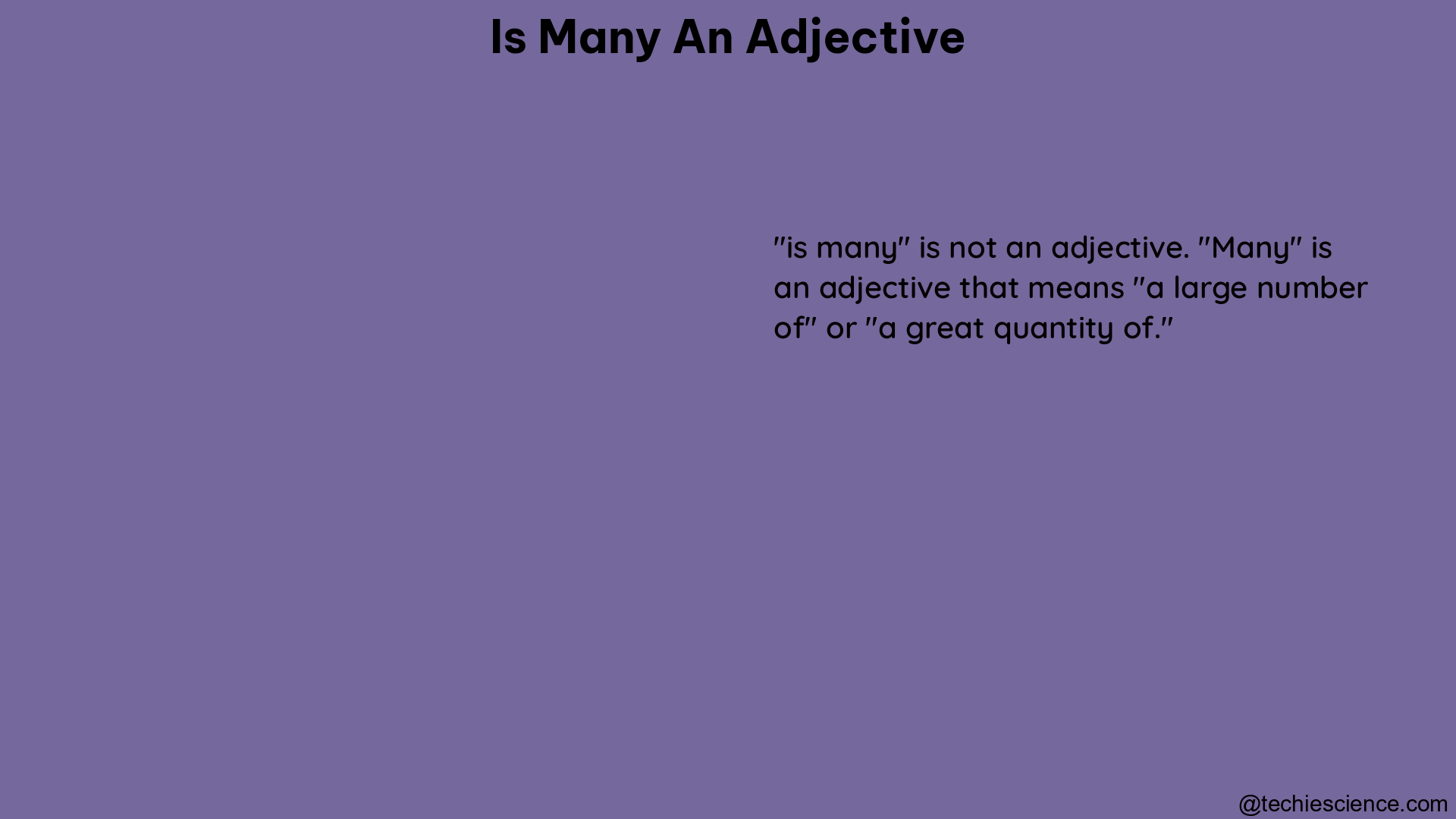Yes, “many” is an adjective that is used to describe nouns or pronouns, indicating a large but indefinite number of items or people. As an adjective, “many” provides more information about the quantity or number of the noun it modifies. Understanding the grammatical function and usage of “many” is crucial for effective communication and writing in the English language.
The Adjective “Many”
Definition and Usage
The adjective “many” is used to indicate a large, but unspecified, number of people, things, or amounts. It is a quantifying adjective that specifies the quantity or number of the noun it modifies. For example, in the sentence “Many students attended the lecture,” the adjective “many” describes the quantity of “students.”
Countable Nouns
“Many” is typically used with countable nouns, which are nouns that can be counted, such as “books,” “people,” or “ideas.” It is used to describe a large but indefinite number of these countable items. For instance, “Many books were available in the library” or “She has made many friends since moving to the city.”
Uncountable Nouns
In contrast, the adjective “much” is used to describe quantities of uncountable nouns, which are nouns that cannot be easily counted, such as “water,” “time,” or “information.” For example, “She spent much time studying for the exam” or “There was much confusion during the meeting.”
Idiomatic Expressions
“Many” can also be used in idiomatic expressions, such as “many a” followed by a singular noun or pronoun, which is equivalent to “many” followed by the corresponding plural. For instance, “Many a student has struggled with this concept” is similar to “Many students have struggled with this concept.”
Grammatical Specifications

Part of Speech
As mentioned, “many” functions as an adjective in the English language. It is used to modify or describe nouns, providing information about the quantity or number of the noun.
Placement in Sentences
When used as an adjective, “many” typically appears before the noun it modifies. For example, “Many people attended the concert” or “The library had many old books.”
Comparison
“Many” can be compared using the comparative and superlative forms. The comparative form is “more,” as in “She has more friends than I do.” The superlative form is “most,” as in “She has the most friends in our group.”
Negation
To negate the quantity described by “many,” the phrase “not many” can be used. For instance, “There were not many people at the event” or “She has not many close friends.”
Examples of “Many” as an Adjective
Here are some additional examples of how “many” can be used as an adjective:
- “Many students participated in the science fair.”
- “The company has received many inquiries about the new product.”
- “After the storm, there were many fallen trees in the neighborhood.”
- “She has traveled to many different countries around the world.”
- “Many of the guests arrived late to the wedding reception.”
- “The museum displayed many rare and valuable artifacts.”
- “Many hands make light work, so we should all pitch in to help.”
- “There are many reasons why people choose to pursue higher education.”
- “The chef used many spices and herbs to create the flavorful dish.”
- “Many a person has been inspired by the words of that famous author.”
Conclusion
In summary, “many” is an adjective that is used to describe a large but indefinite number of countable nouns. It provides information about the quantity or number of the noun it modifies, and it can be used in a variety of contexts and sentence structures. Understanding the proper usage of “many” as an adjective is essential for effective communication and writing in the English language.
References:
- https://homework.study.com/explanation/is-many-an-adverb.html
- https://www.merriam-webster.com/dictionary/many
- https://promova.com/what-part-of-speech/many
Hi… I am Sowndharya Jagadeeswaran, a university rank holder in M.A. English Literature. I have also done my master’s in Business Administration. Inquisitive as I am, my interest in action-oriented research helped me publish research papers in reputed journals. Now, as a career, I am an instructor where I teach young and adorable students the intricate technicalities of Public Speaking and Creative Writing. I also enjoy writing articles on topics I specialize and research in.
You can connect with me through LinkedIn.-